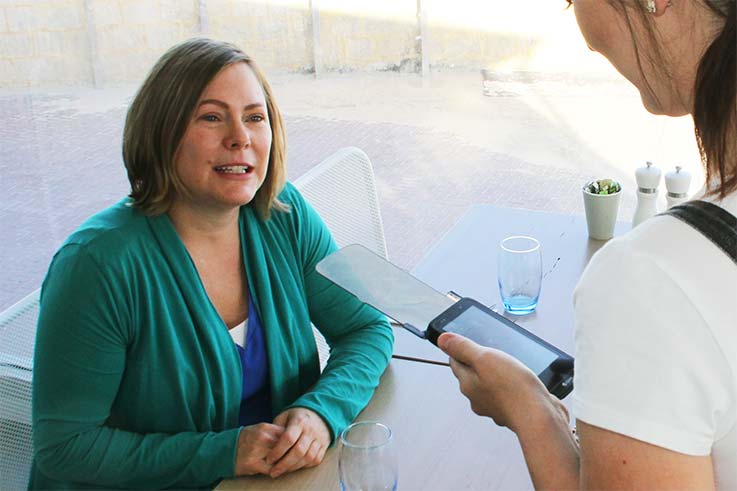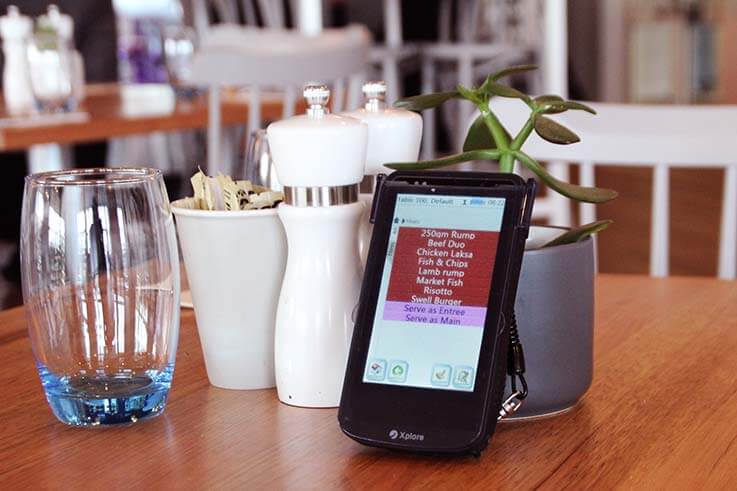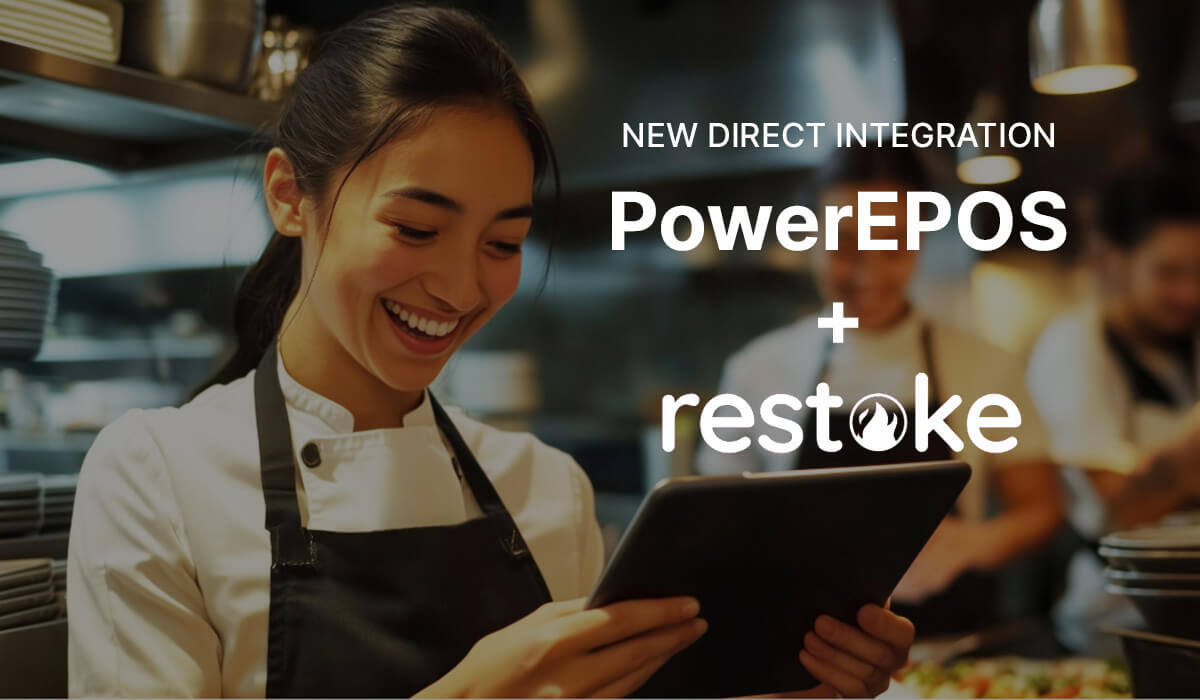
Posted on 12th October 2021
Switching mobile ordering devices? 6 factors to consider
When talking to our customers, we are regularly asked how Waiterpads compare to tablets for mobile order taking. In this article, we compare them by discussing 6 key factors to consider when weighing up the best mobile ordering device for your venue.

1. Reliability
The core purpose of a mobile ordering device is to reliably transmit orders to service locations for preparation, and the Point of Sale terminal for payment. Wi-fi, a popular and common set-up, is the platform that tablet devices use. In a typical hospitality environment factors such as high-powered microwaves, stainless steel areas, mobile phones, and wireless laptops can interfere with wi-fi transmission causing drop-outs and potentially, lost orders.
Triniteq’s Waiterpad can run on wi-fi but is more commonly set up to run on Radio Frequency (RF) which provides a single frequency for ordering, and it has the least amount of interference and the highest level of uptime and reliability. It also has a much greater range so that larger venues can send orders from further away such as from multiple floors and rooms. To test the range at your venue, the Waiterpad has an inbuilt range tester to confirm receipt of orders at relevant service locations.

2. Customer Engagement
Since we launched the original Waiterpad back in 2001 we’ve been hearing the argument that the use of mobile ordering devices when taking a customer’s order causes a lack of engagement with the customer. This is a fair concern considering the use of a mobile ordering device can be compared to using a mobile phone while talking to someone. While the server does need to interact with the device to input the order, it can be argued that the same action occurs when writing an order on paper.
We’ve found that venues experiencing success with mobile ordering have recognised that the key lies in training staff to keep their hands (and device) behind their back while listening to the order and re-establishing eye contact between each order input. By training staff on how to handle the device while interacting with the customer, the personal service style can be preserved. When comparing the Waiterpad with the tablet for levels of customer engagement, the results are very similar.
3. Durability
If you work in the hospitality business, you’ll know first-hand the unforgiving nature of the environment. Floors are hard, space is short, people are busy, and damage to hardware can be hard to avoid. Hardware built-for-purpose will obviously last longer.

Most regular tablet devices have been adapted for mobile ordering whereas Waiterpad was built for the task. Waiterpad features a tough, trans-reflective touchscreen (meaning it’s readable outdoors), a solid, rubberised outer body with reinforced joins on all 4 corners for added durability, and it has been drop tested to 1.5 meters on concrete. The Waiterpad is also made up of component parts that can be easily fixed or replaced at a fraction of the cost of the unit.
Tablets, on the other hand, are less durable and a drop from 1.5 meters on concrete would most likely crack the screen or worse. Then you will need to decide whether to replace just the screen or the whole unit.
Australian Tax Office Instant Asset Write-off for hardware extended. Find out more>>
4. Battery life
Most tablets have an inbuilt (non-removable) battery. If for some reason a tablet did run out of power, on most models you can’t swap the battery out for a new one. You would need to grab another fully charged tablet, so you would need a few fully charged spares constantly available. Plus, like any mobile phone, as tablets age, the battery capacity reduces until, again, you have to replace the whole device.
Waiterpad features a removable (and replaceable) 18-hour battery and on each docking station, space for an additional battery to be charging so you always have a spare, fully charged, and ready to go. Additionally, the docking station daisy-chain feature allows you to charge 3 units from one power point, so you’ll never run out of power.
5. Increased Productivity
There are huge benefits to be gained by utilising mobile ordering devices at your venue. By arming your staff with these clever devices, you’re keeping them on the floor, in their sections, with your customers. Staff productivity and the level of service is increased while travel time to deliver orders to service locations is virtually wiped out, requiring less staff to serve more customers. Profit is increased by reducing staff costs and employing on-device, up-sell prompts, and while delivering real-time stock availability. Both devices can integrate with Triniteq Stock Manager to receive up-to-the-minute stock levels allowing staff to suggest alternatives when something is out of stock. So in terms of productivity, there is little difference in devices.
6. Screen Size
There is an obvious difference in screen size between the Waiterpad and the tablet. Waiterpads are designed to be compact and not get in the way of other duties a server must perform and because of this, the screen size has been sacrificed. This means that product selection and functions are all text-based. On the other hand, the larger screen on the tablet enables images to be used for food and beverage selection which can speed up ordering, but this results in a larger unit which can be more cumbersome when moving around the venue.
Which Device?
The Waiterpad is easily suitable hardware in a hospitality environment. The size, durability, and RF transmission platform make them more reliable, easier to carry, and built to last. The cost of the Waiterpad is slightly more upfront but less over time as you factor in replacement costs.
Although tablets are commonly used for mobile ordering they tend to be more suited to stationary roles such as a 'lite' version of a mounted POS terminal for counter service where their size can handle larger buttons and images, and they can be connected to a continuous power source. The initial outlay per tablet is generally less but they are also less durable and cost more to replace if they are damaged.
Of course, a tablet POS has nowhere near the functionality and features of a POS terminal so if you are considering one or the other for your venue, give us a call to discuss the difference between using a tablet as a mobile or mounted POS, and a purpose-built POS terminal.
If you're interested in introducing mobile ordering at your venue, get in contact with us today to find out more.
Related articles
Pholklore is a vibrant, modern Vietnamese eatery known for blending traditional flavours ...
For a limited time, new Xero customers can access 90% off their Xero fees for 6 months, a ...
Triniteq’s PowerEPOS has taken stock and inventory management to the next level with a ...


